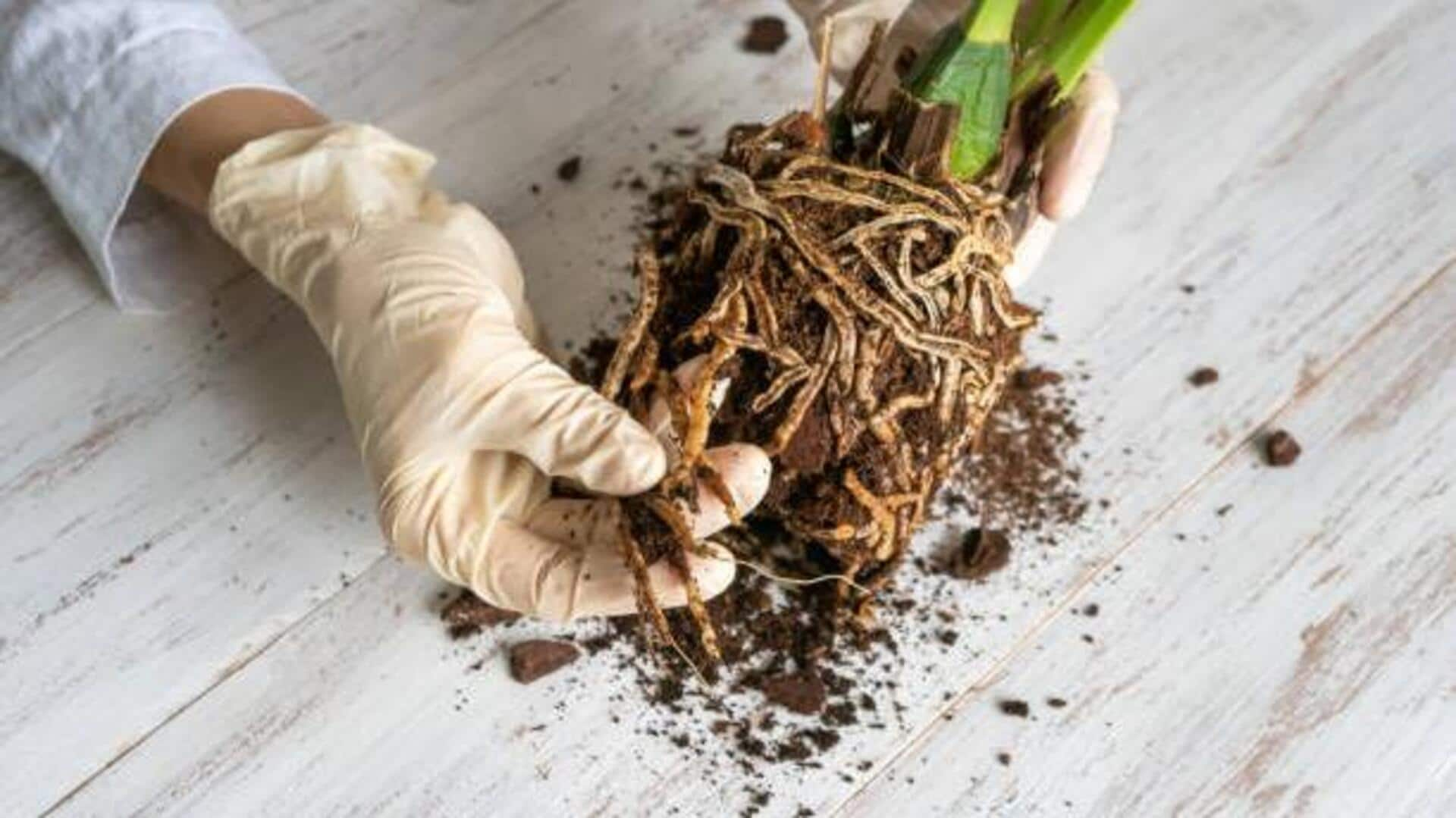
Gardening 101: Hacks to fix root rot at home
What's the story
Root rot is a common problem that can affect the health of your houseplants, often caused by overwatering or poor drainage. It can lead to wilting leaves, stunted growth, and even plant death if not addressed promptly. However, with a few simple DIY hacks, you can prevent and fix root rot effectively. These methods focus on improving drainage, managing moisture levels, and promoting healthy root growth without the need for expensive solutions.
Tip 1
Use well-draining soil mix
A well-draining soil mix is essential to prevent root rot. Use a combination of potting soil with perlite or sand to enhance drainage. This mix allows excess water to flow through easily, reducing the risk of roots sitting in moisture. Always ensure that the soil dries out slightly between waterings to keep roots healthy.
Tip 2
Add drainage holes in pots
Proper drainage holes at the bottom of pots are essential to prevent water from accumulating at the bottom. If your pot doesn't have holes, drill some carefully or use pots that come with them. This simple hack prevents waterlogging and keeps the roots from suffocating due to excess moisture.
Tip 3
Implement bottom watering technique
Bottom watering is an effective way to control how much moisture your plants get. Place your pot in a tray filled with water and let it soak up from the bottom for about 15 minutes. This way, only the top layer of soil remains dry, preventing overwatering and keeping the roots healthy.
Tip 4
Use natural fungicides sparingly
If you suspect root rot has already set in, natural fungicides like cinnamon powder can help treat it. Sprinkle a small amount directly onto affected roots after removing the plant from its pot. Replant in fresh soil with good drainage properties to prevent recurrence.
Tip 5
Monitor humidity levels indoors
High indoor humidity levels can contribute to root rot by keeping soil constantly moist. Use a hygrometer to monitor humidity levels around your plants and adjust them as needed with dehumidifiers or by improving ventilation in your home. Keeping humidity levels balanced helps maintain optimal conditions for plant health without risking overwatering issues.